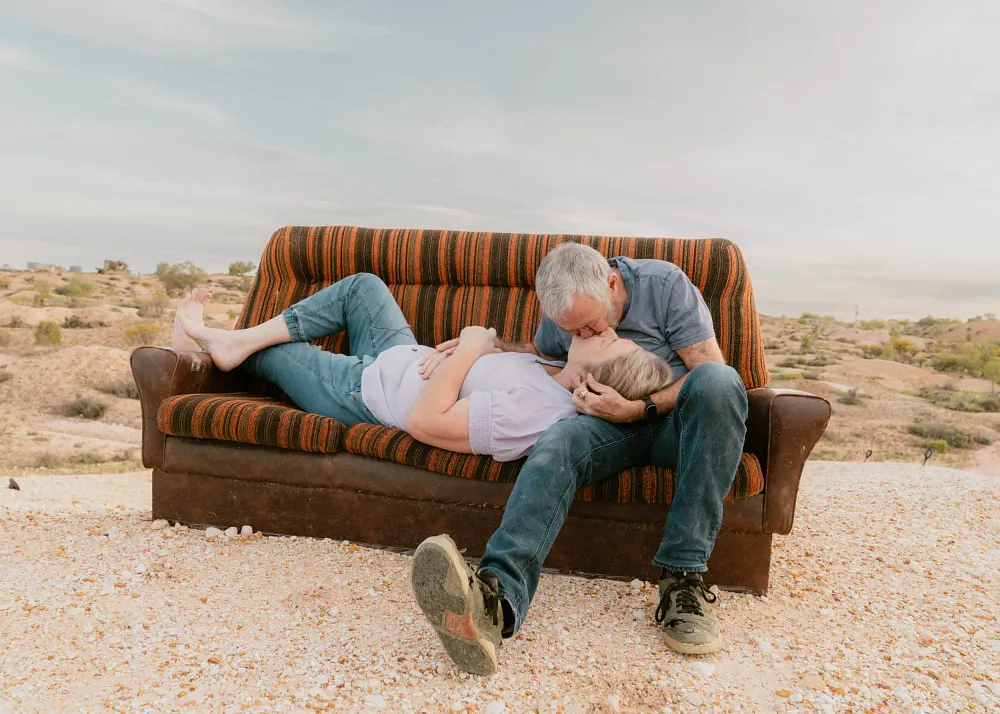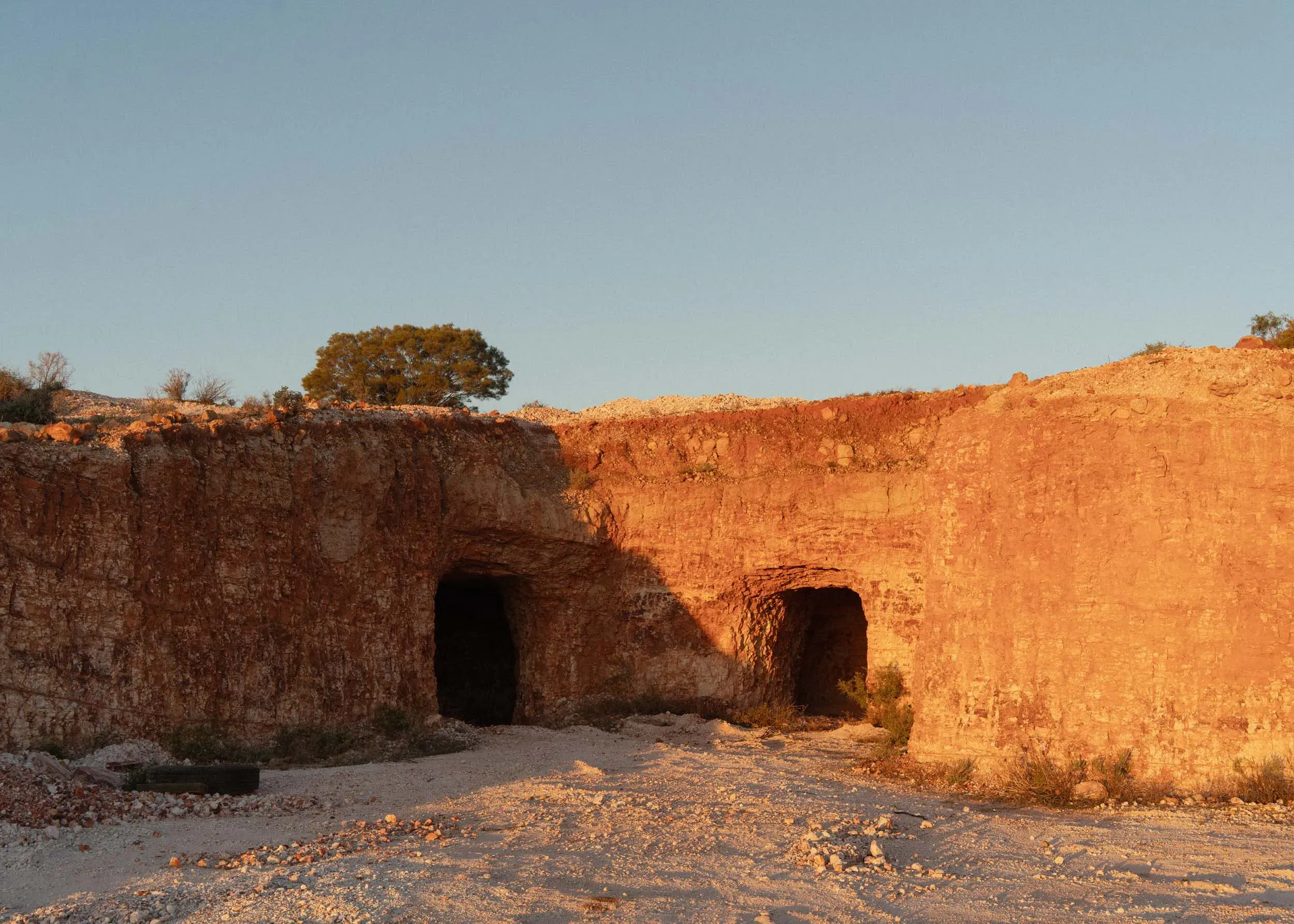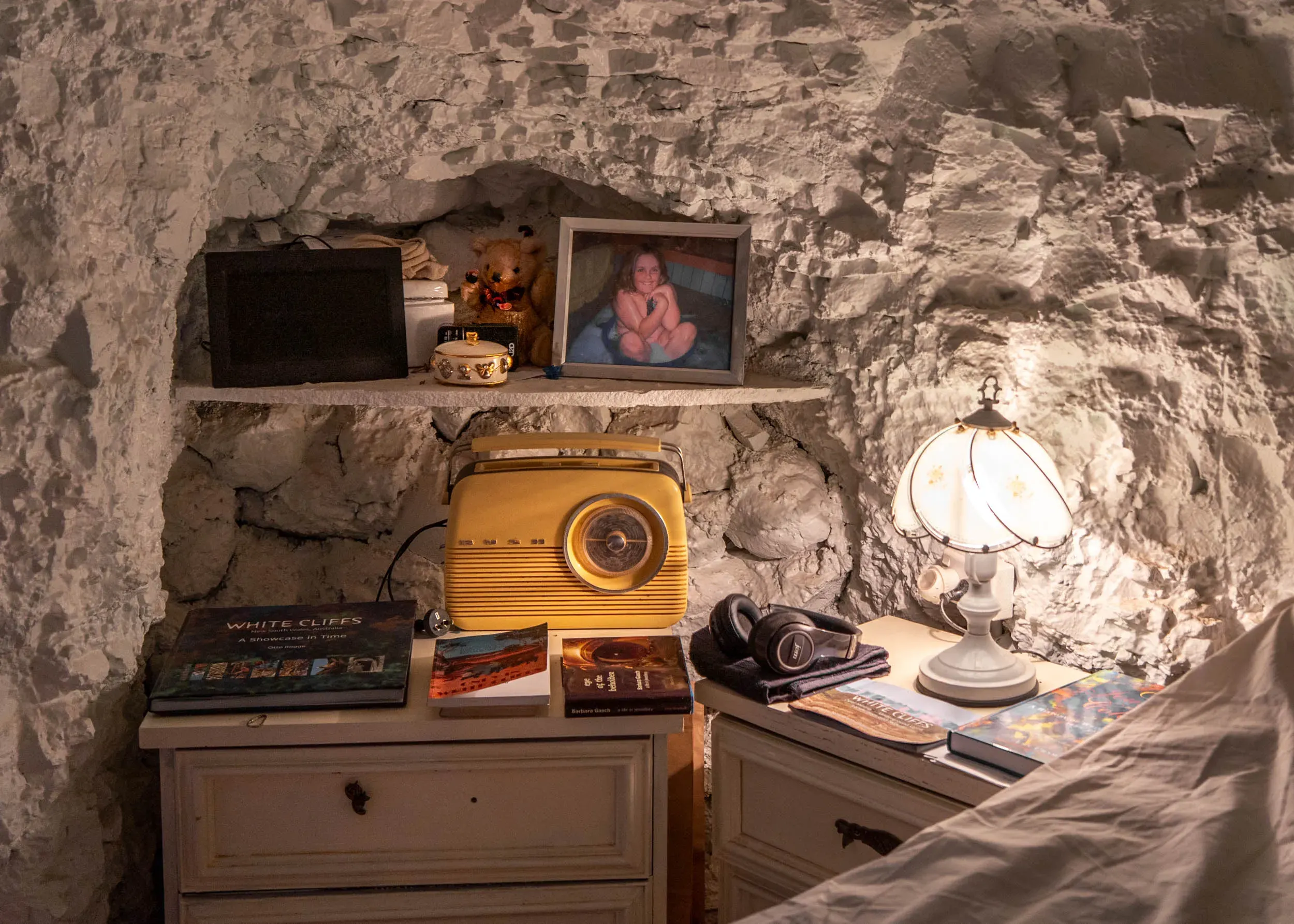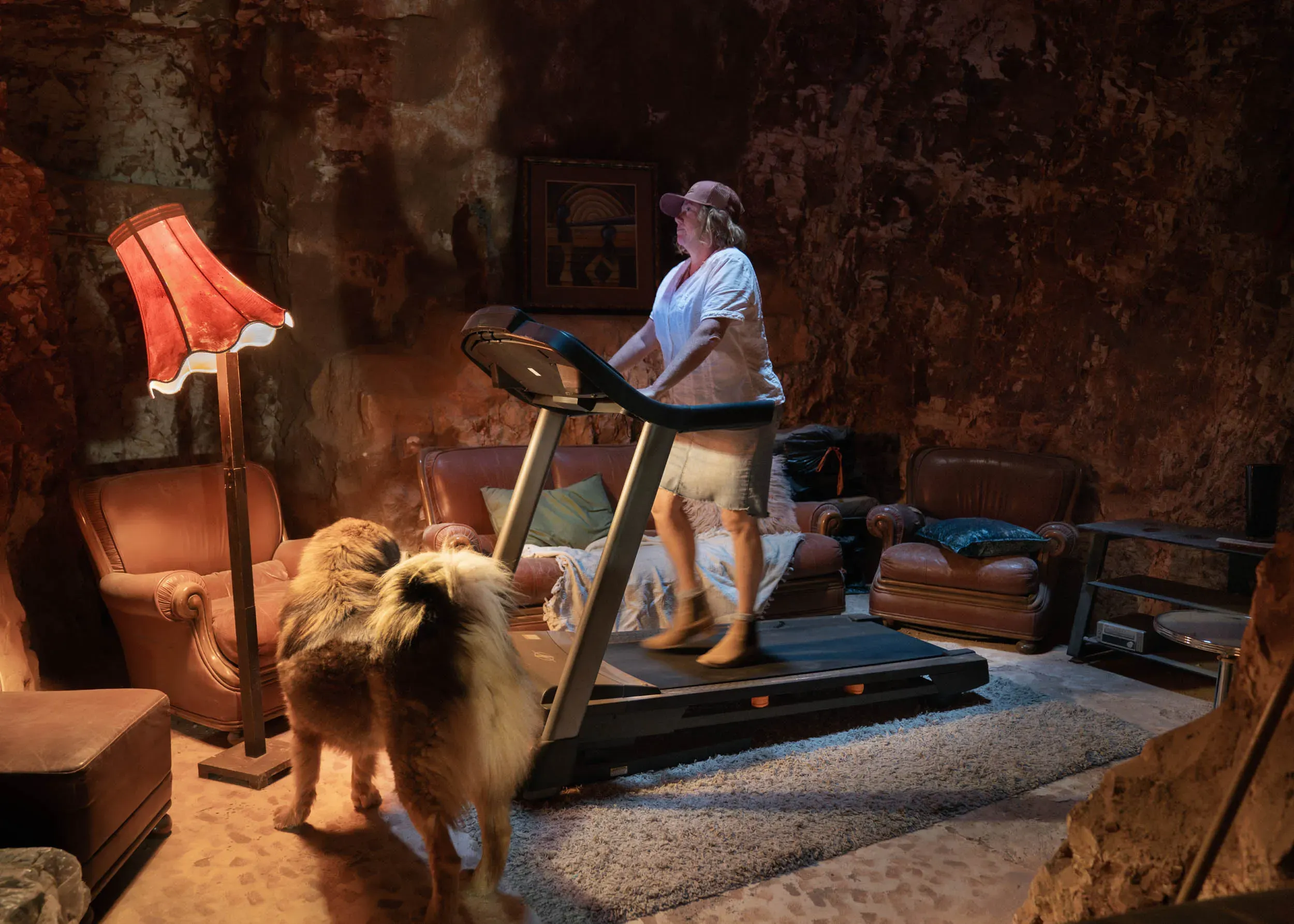

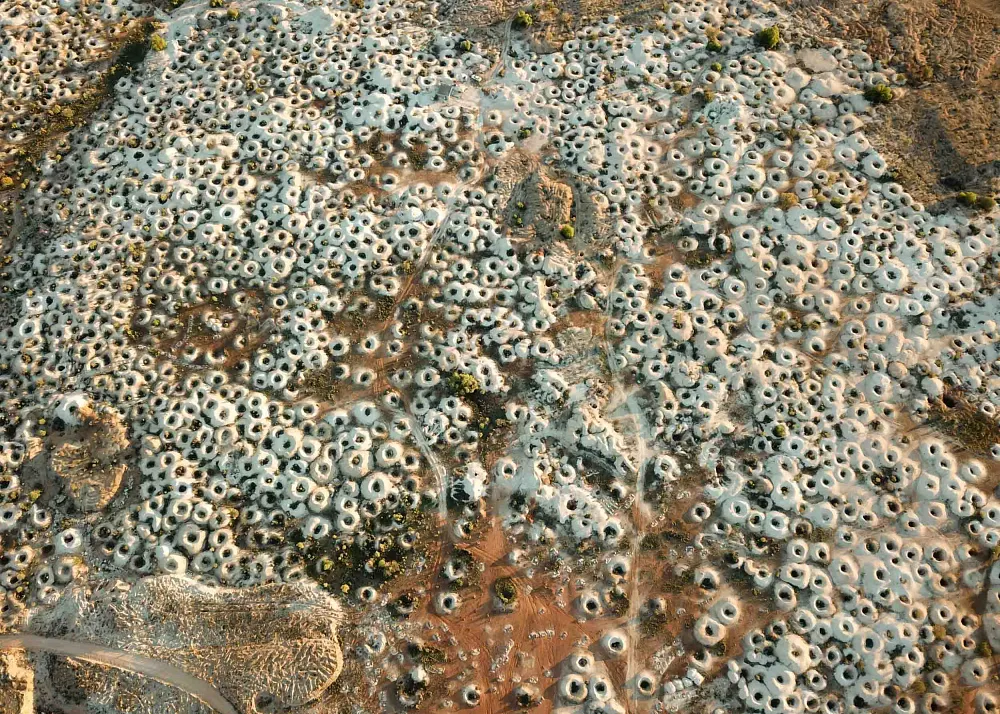
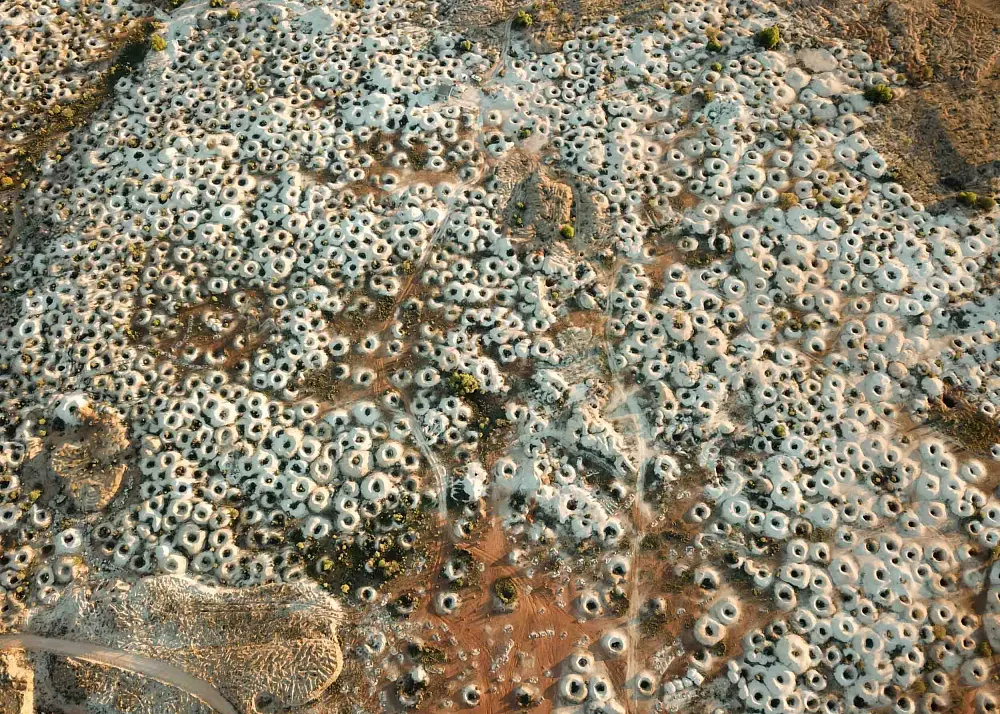
An aerial view of the area reveals a moonscape-like terrain, shaped by an estimated 50,000 opal mine shafts.
Many of these shafts are now abandoned. However, only those who look closely will notice that beneath this very surface thrives an entire underground community.


Air shafts on the ground indicate the presence of an underground home in White Cliffs, NSW, Australia.
Due to the absence of windows, air shafts and an efficient air circulation system are essential to maintain a healthy and habitable environment in dugouts.
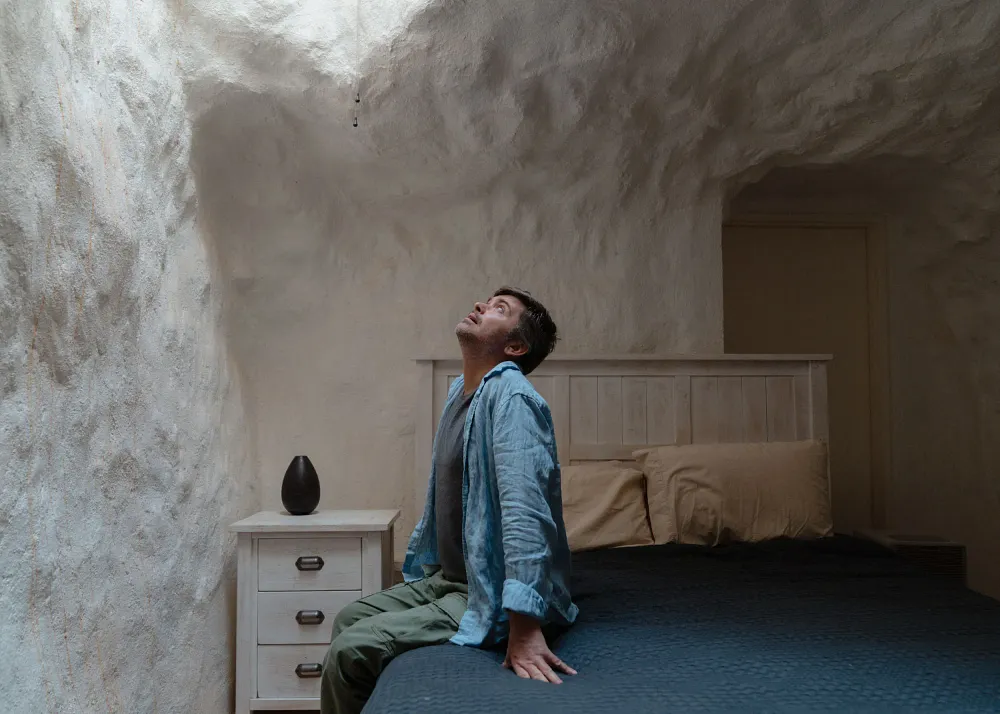

"I want to live underground because it makes me feel different. There's a sense of grounding, something to push against. Living in an apartment in the city doesn't feel solid enough. Here, you feel more present in the moment compared to the city." - Denis
Undergound homes, known as "dugouts", keep a constant temperature of 72F (22C) year-round, providing a comfortable living environment in the heart of the desert.
Each dugout is unique. Residents often use mining equipment to excavate the space, and the interiors are hand-carved and shaped. Many dugouts are repurposed old opal mines, adapted to living conditions.


Hiedee (left) and her grandmother Maxine (right) in their underground home.


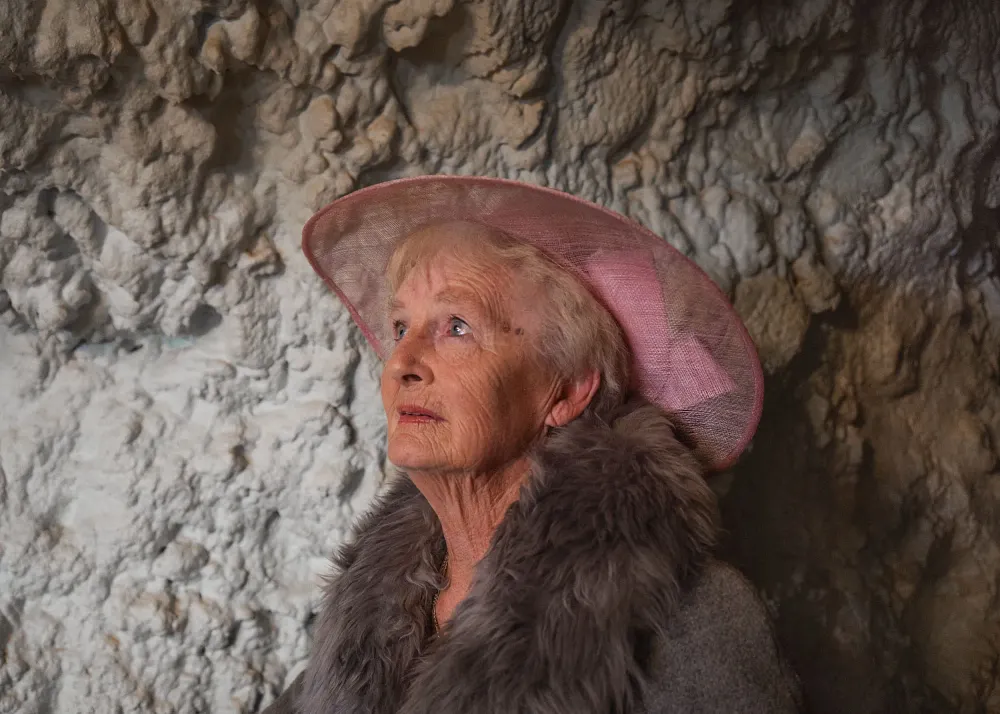
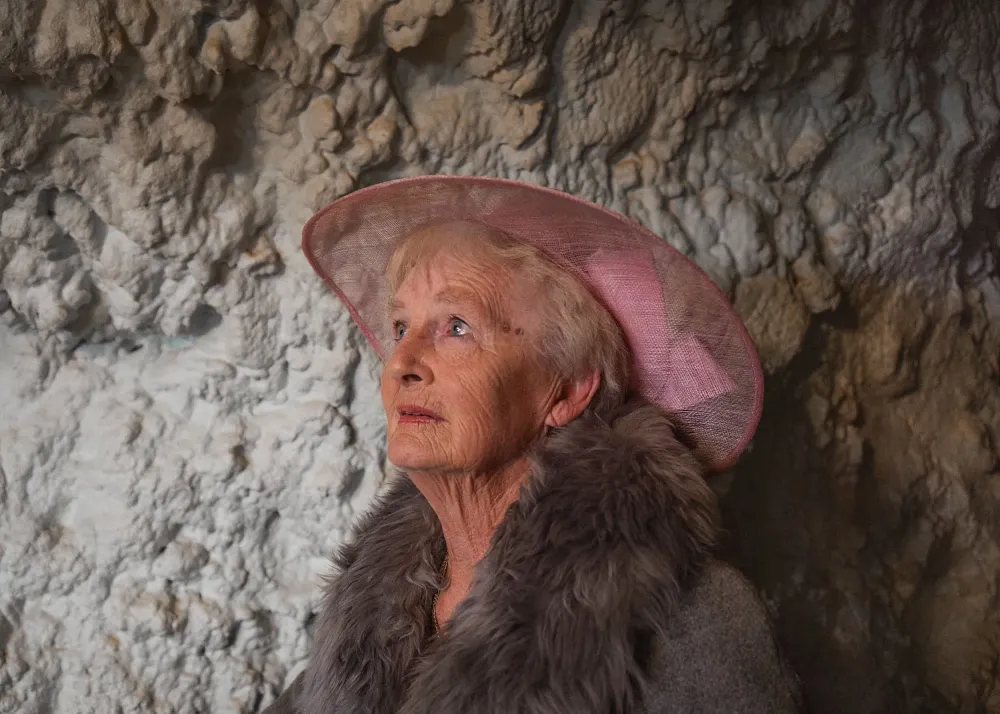
In such a remote place, survival goes beyond enduring extreme temperatures and limited resources. The nearest supermarket is three hours away, meaning residents of White Cliffs must drive 600 km for a round-trip to purchase groceries.
The desert climate, with its droughts, floods, and scorching hot days, shapes daily life, demanding both adaptability and a deep connection to the land.
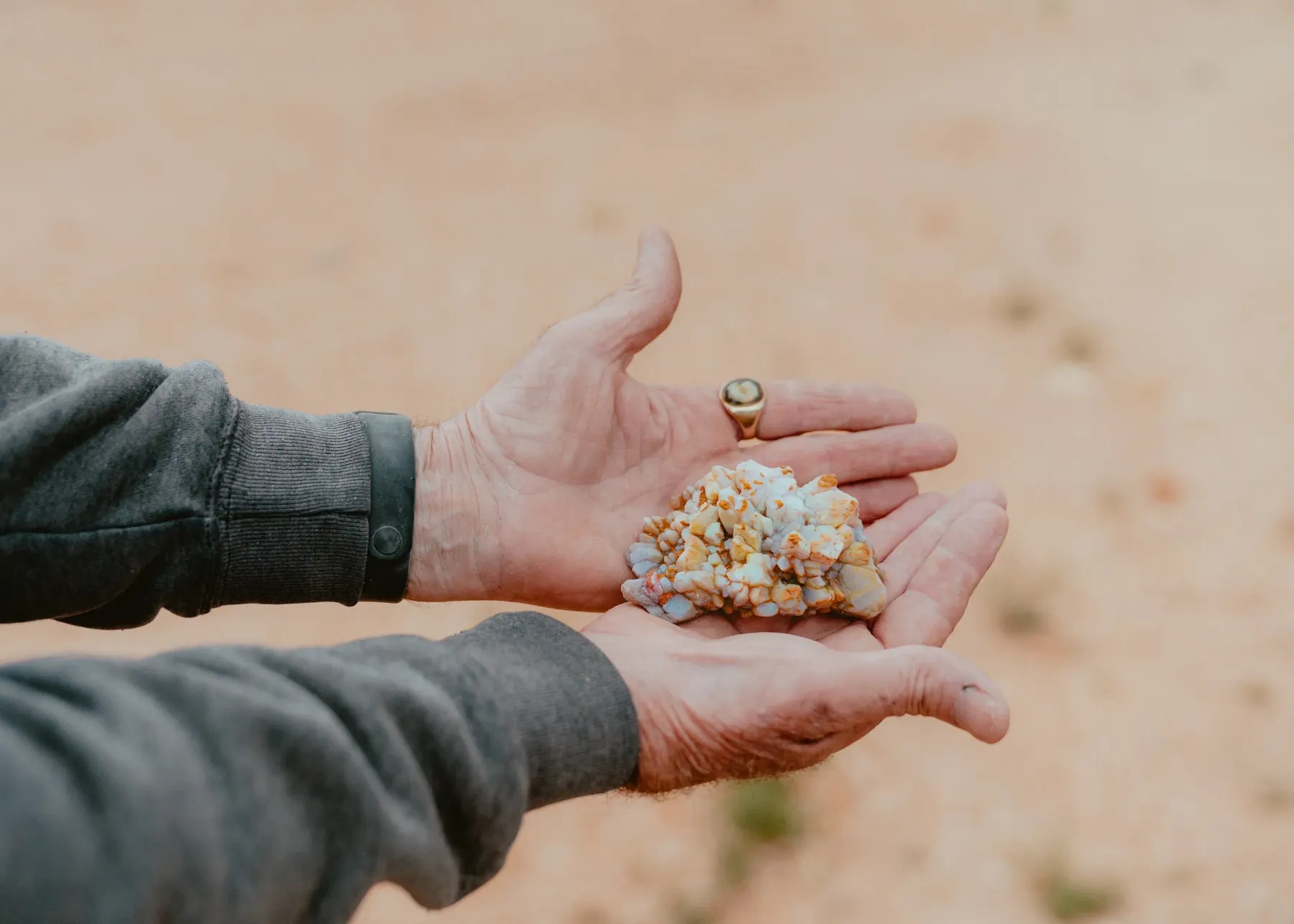

A "pineapple" opal, , a rare formation named for its resemblance to the tropical fruit.
While most of the opal in the region has been mined decades ago, some residents continue to hope
for the chance to unearth one of these precious stones.


Despite the challenges of living in such a remote location, this small community has established a home in a place seemingly unfit for human habitation.
When asked why they choose to live here, many cite the slow pace of life, the sense of freedom, or the lower cost of living.
In Australia, a country where close to 90% of the population lives in urban areas, and where the cost of living has skyrocketed in recent years, White Cliffs stands as a quiet rebellion, an exception to the global trend toward urbanization, reminding us that alternative ways of living are still possible.








“This place is not for everyone. Some people come here, and all they see is a dust bowl. Others come here and find a home.”
Otto Rogge, resident of White Cliffs
